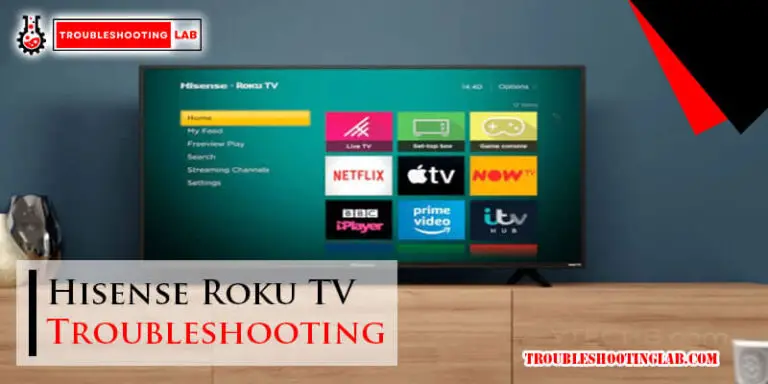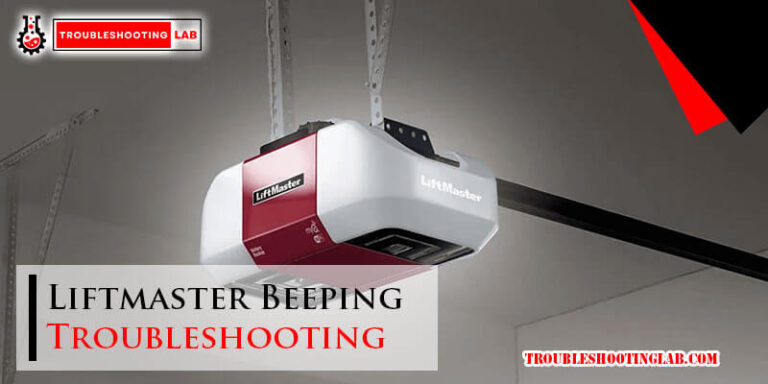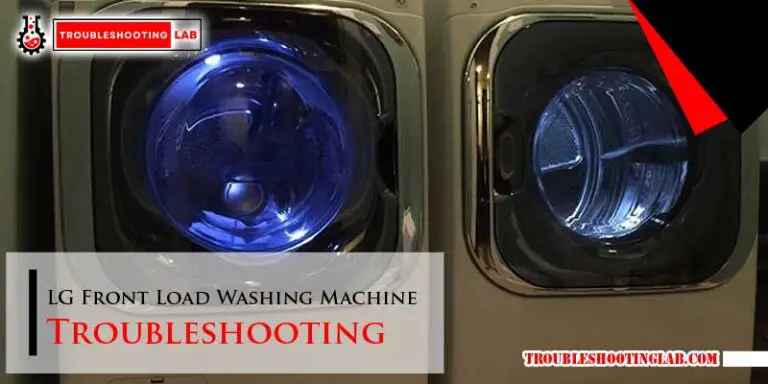Roper Washer Troubleshooting: Fix Your Washer with Expert Tips!
If your Roper washer is not spinning and draining, it may be due to a faulty water level control or a clogged plastic tube attached to the water level valve. To fix this, open the machine’s control panel and clear out any clogs with vinegar or replace the water level valve if it is corroded.
Another common issue is the washer stopping mid-cycle, which may be caused by a defective water inlet valve. Test the valve for continuity using a multimeter and replace it if necessary. Additionally, if your Roper washer is not filling with water or filling slowly, check the water pressure and clean the screens inside the water inlet valve hose connection ports.
If the issue persists, the water inlet valve may need to be replaced.

Common Issues With Roper Washer
Roper washers are known for their durability and efficiency. However, like any other appliance, they can experience issues over time. If you’re facing problems with your Roper washer, understanding the common issues and troubleshooting them can help you get it back up and running in no time. In this article, we’ll discuss some of the most common issues that Roper washer owners encounter and provide solutions to resolve them.
Washer Not Completing Cycle
If your Roper washer is not completing its cycle, there could be a few reasons behind it. One possible cause is a faulty water inlet valve. To check if this is the issue, use a multimeter to test the continuity of the water inlet valve. If it doesn’t have continuity, you’ll need to replace it.
Another reason why your washer may not be completing the cycle is a malfunctioning water level control. To troubleshoot this, open the control panel and look for a plastic tube attached to the water level valve. If it’s clogged, clearing it out with vinegar can help. However, if the valve itself is corroded, it will need to be replaced.
Washer Not Spinning And Draining
If your Roper washer is not spinning and draining, there are a few things you can check. Firstly, ensure that the water level control is functioning properly and not causing any issues. Secondly, examine the drain hose for any blockages or kinks that may be preventing proper water drainage.
In addition, check if there is any clogging in the pump filter or drain pump itself. Cleaning these components can often resolve the spinning and draining issues. If none of these solutions work, it may be necessary to replace the drain pump or seek professional assistance.
Washer Not Filling With Water
A Roper washer that is not filling with water may have a problem with the water inlet valve or the water pressure. Start by checking the water pressure to ensure it is adequate for the washer to function properly. If everything seems fine with the water pressure, clean the screens inside the water inlet valve hose connection ports to remove any debris or mineral buildup.
If the washer still fills slowly or not at all, it is likely that the water inlet valve needs to be replaced. You can either purchase a replacement valve and install it yourself or contact a professional for assistance.
Washer Not Starting
If your Roper washer is not starting at all, there could be a few reasons for this issue. First, check if the power cord is securely plugged into a functioning electrical outlet. Ensure that the outlet itself is not faulty by plugging in another device.
If the power supply seems fine, check if the washer’s door or lid is properly closed. Some Roper washers have safety mechanisms that prevent them from starting if the door or lid is not fully closed. Make sure there are no obstructions preventing the door or lid from closing properly.
Lastly, check the washer’s control panel for any error codes or indicators that may provide insight into the issue. Refer to the appliance’s manual or the manufacturer’s website for troubleshooting specific error codes.
Troubleshooting Tips
If your Roper washer is not completing its cycle or experiencing issues like not spinning or draining, there are troubleshooting tips you can follow. Check the water level control and the plastic tube attached to the water level valve for any clogs or corrosion.
You may also need to clean or replace the water inlet valve. For more specific troubleshooting and repair instructions, visit Roper Washing Machine Troubleshooting & Repair.
Check Water Level Control
If your Roper washer is not spinning or draining, the water level control may be the culprit. To troubleshoot this issue, open the machine’s control panel and locate a plastic tube attached to the water level valve. Check if it’s clogged, and if so, clear it out using vinegar. If the valve itself is corroded, it might be necessary to replace it.
Inspect And Clean Water Inlet Valve
When the water inlet valve fails, your Roper washer may stop in the middle of a cycle, waiting for water to enter. To check if the water inlet valve is defective, use a multimeter to test for continuity. If there’s no continuity, it means the valve is faulty and should be replaced. Furthermore, if your washer is filling slowly or not filling at all, it’s worth cleaning the screens inside the water inlet valve hose connection ports before considering a replacement.
Diagnose Fault Codes
If your Roper washer displays fault codes on its control panel, you can use them to diagnose the issue. Fault codes manifest as a combination of letters, lights, or numbers depending on the manufacturer. Pay attention to where the fault code appears, as it can help identify the problem area, such as the drainage circuit or the heating circuit. By observing the machine’s behavior, you can gather additional information to pinpoint the exact fault.
Check Power Supply
If your Roper washer is not responding at all, check the power supply. Ensure that the washer is plugged in correctly and that there are no issues with the electrical outlet. It’s also worth checking the circuit breaker to ensure it hasn’t tripped. If the power supply seems to be fine, but the washer still doesn’t work, it may require professional assistance to identify and resolve the problem.
Check Lid Switch
Another potential issue with your Roper washer is a faulty lid switch. If the lid switch is not functioning properly, the washer may not start or stop mid-cycle. Inspect the lid switch to see if it’s damaged or loose. If necessary, replace the lid switch to restore proper functionality.
In conclusion, troubleshooting your Roper washer can save you time and money by pinpointing common issues. By checking the water level control, inspecting and cleaning the water inlet valve, diagnosing fault codes, and ensuring a proper power supply and lid switch, you can resolve some of the most common problems with your Roper washer.
Expert Advice And Solutions
When it comes to troubleshooting your Roper washer, having expert advice and solutions can make all the difference. Whether you’re dealing with a faulty water level control, corroded water inlet valve, or a mysterious fault code, we’ve got you covered. In this guide, we’ll take you through step-by-step instructions on how to tackle these common issues and get your washer back up and running smoothly.
Replace Faulty Water Level Control
If your washer won’t spin or drain properly, a faulty water level control could be the culprit. To check for this issue, open your machine’s control panel and locate a plastic tube attached to the water level valve. If it’s clogged, use vinegar to clear it out. However, if the valve itself is corroded, you may need to replace it. This simple replacement can restore proper water levels and ensure your washer completes its cycle without any hiccups.
Replace Corroded Water Inlet Valve
A corroded water inlet valve can lead to your washer stopping mid-cycle. To test if this is the cause, use a multimeter to check for continuity. If there is no continuity, it’s time to replace the water inlet valve. This straightforward fix allows water to enter your washer without any interruptions, ensuring a smooth and efficient cycle.
Diagnose And Fix Fault Codes
Fault codes displayed on your washer can be confusing, but diagnosing and fixing them doesn’t have to be. Watch your machine closely to determine the source of the fault, such as in the drainage circuit or heating circuit. Different manufacturers have their own unique fault codes, so observing your washer’s behavior and doing a bit of research can help you identify the problem. Once you’ve pinpointed the issue, you can take the necessary steps to rectify it and get your washer back in working order.
Repair Or Replace Power Cord
If your Roper washer is experiencing power issues, such as not turning on or randomly shutting off, a faulty power cord may be to blame. Inspect the cord for any visible damage or frayed wires. If you find any, it’s time to either repair or replace the power cord. This ensures a safe and reliable power connection, allowing your washer to function properly without any interruptions.
Adjust Or Replace Lid Switch
The lid switch is an essential safety feature that prevents your washer from running with the lid open. If your washer isn’t starting or stopping mid-cycle, a faulty lid switch could be the cause. Check if the switch is properly adjusted or if it needs to be replaced. This simple adjustment or replacement can ensure that the lid is securely closed during operation, allowing your washer to function smoothly and efficiently.
Preventive Maintenance Tips
If you’re experiencing issues with your Roper washer, try these preventive maintenance tips: check the water level control for clogs, test the water inlet valve for continuity, clean the screens inside the water inlet valve hose connection ports, and diagnose any fault codes displayed on the machine.
Regularly Clean And Maintain Water Inlet Valve
To ensure the smooth operation of your Roper washer, it is essential to regularly clean and maintain the water inlet valve. Over time, the valve can become clogged with mineral deposits, affecting water flow and potentially leading to issues such as slow or inadequate filling. To clean the valve, follow these steps:
- Turn off the water supply to the washer.
- Disconnect the hoses from the back of the washer.
- Inspect the screens inside the water inlet valve hose connection ports for any debris.
- Clean the screens using a soft brush or cloth.
- Reconnect the hoses and turn on the water supply.
Regularly cleaning the water inlet valve will help maintain proper water flow and prevent potential issues with your Roper washer.
Perform Routine Checks For Fault Codes
Routine checks for fault codes can help diagnose and resolve any potential issues with your Roper washer. Fault codes are unique combinations of letters, lights, or numbers displayed on the front of the machine, indicating specific problems within the machine’s circuits. To perform routine checks for fault codes:
- Refer to the Roper washer manual for a list of fault codes specific to your model.
- Observe any lights or numbers displayed on the washer’s control panel.
- Compare the observed codes to those listed in the manual.
- Follow the troubleshooting steps provided in the manual to resolve the identified issue.
By routinely checking for fault codes, you can quickly identify and address any problems with your Roper washer, ensuring its optimal performance.
Keep The Washer Balanced And Level
Maintaining proper balance and leveling of your Roper washer is crucial for its efficient and effective operation. An unbalanced washer can cause excessive vibrations, noise, and potentially even damage the machine. To keep your washer balanced and level, follow these steps:
- Place a level on top of the washer to ensure it is sitting evenly on the floor.
- If the washer is not level, adjust the leveling legs at the bottom of the machine until it is balanced.
- Ensure that all four legs are in contact with the floor and that the washer does not wobble when pushed.
By maintaining proper balance and leveling, you can prevent potential issues caused by an unbalanced washer and prolong the lifespan of your Roper appliance.
Clean The Washer Drum Regularly
Regularly cleaning the washer drum is essential to prevent the buildup of dirt, detergent residue, and mildew, which can affect the cleanliness of your laundry and the performance of your Roper washer. To clean the washer drum:
- Start by running an empty hot water cycle with a cup of white vinegar. This will help dissolve any debris or residue inside the drum.
- After the vinegar cycle, wipe the drum with a soft cloth or sponge to remove any remaining residue.
- Leave the washer door open for a while after each use to allow the drum to dry completely.
Regularly cleaning the washer drum will help maintain a fresh and efficient washing environment, ensuring optimal performance with each cycle.
Avoid Overloading The Washer
Overloading the washer can result in poor cleaning performance, increased wear and tear on the machine, and potential issues such as imbalanced loads or damage to the drum. To avoid overloading the washer:
- Follow the manufacturer’s guidelines regarding load capacity.
- Leave enough space in the drum for the clothes to move freely.
- Spread the load evenly to maintain balance.
By avoiding overloading, you can optimize the cleaning performance of your Roper washer and prevent potential issues caused by excessive strain on the machine.
When To Seek Professional Help
If you’re experiencing issues with your Roper washer, it may be time to seek professional help. Whether your machine won’t complete a cycle, won’t spin or drain, or has other faults, a professional technician can diagnose and repair the problem for you.
If you own a Roper washer, it is not uncommon to encounter troubleshooting issues from time to time. While some problems can be easily resolved by following simple DIY steps, there may be instances when it is best to seek professional help. In this section, we will discuss the situations in which you should consider calling a technician to assist you with your Roper washer troubleshooting.
Complex Electrical Or Mechanical Issues
When dealing with complex electrical or mechanical issues, it is advisable to seek the expertise of a professional. These issues can be difficult to diagnose and repair without the proper knowledge and skills. A qualified technician has the experience and tools necessary to identify the underlying causes of the problems and provide effective solutions. Trying to fix these issues on your own may worsen the situation or even cause further damage to your washer.
Persistent Recurring Problems
If you are repeatedly facing the same problems with your Roper washer, it may be a sign of a more serious issue. When troubleshooting steps fail to resolve the problem permanently, it is recommended to consult a professional. They can thoroughly inspect your washer, diagnose the root cause of the recurring problem, and implement long-lasting solutions. Ignoring persistent issues may result in additional damage and higher repair costs in the future.
Lack Of Technical Knowledge Or Skills
If you do not possess the technical knowledge or skills required to troubleshoot and repair your Roper washer, it’s better to leave the task to the experts. Attempting DIY fixes without proper understanding of the appliance’s functioning may lead to mistakes or incorrect repairs. Hiring a professional ensures that your washer’s issues are addressed correctly, minimizing the risk of further damage and ensuring optimal performance.
Warranty Coverage
If your Roper washer is still under warranty, it is advisable to consult the manufacturer or an authorized repair service. Attempting repairs on your own or seeking assistance from unauthorized technicians may void the warranty. By choosing professional help, you can ensure that the necessary repairs are carried out in accordance with the warranty terms, protecting your investment in the appliance.
Emergency Situations
In certain situations, such as a malfunction that poses a safety risk or a sudden breakdown that hinders your daily activities, seeking professional help is crucial. Emergency situations require immediate attention and expertise. Professional technicians are trained to handle such situations efficiently, restoring your Roper washer’s functionality and ensuring your peace of mind.
Frequently Asked Questions
Why Is My Washer Not Spinning And Draining?
If your washer is not spinning and draining, it may be due to a faulty water level control. Check for a clogged plastic tube attached to the water level valve and clear it with vinegar. If the valve is corroded, it may need to be replaced.
Why Does My Roper Washer Stop On The Wash Cycle?
If your Roper washer stops on the wash cycle, it could be due to a faulty water inlet valve. The washer will wait for water to enter, causing it to stop mid-cycle. Test the water inlet valve with a multimeter for continuity, and if it doesn’t have continuity, replace it.
Why Won T My Roper Washer Fill With Water?
A Roper washer may not fill with water due to several reasons. First, check the water pressure to ensure it is adequate. If the pressure is fine, clean the screens inside the water inlet valve hose connection ports. If the washer still fills slowly or not at all, the water inlet valve may need to be replaced.
How Do You Diagnose A Washing Machine Fault?
To diagnose a washing machine fault, check for a displayed fault code on the front panel. These codes indicate issues with different parts of the machine. Additionally, observe the machine while it’s running to identify potential faults in the drainage or heating circuits.
Why Is My Washer Not Spinning And Draining?
If your washer won’t drain or spin, the water level control may be faulty. Open the machine’s control panel and look for a plastic tube attached to the water level valve. If it’s clogged, clear it out with vinegar. If the valve itself is corroded, it may need to be replaced.
Conclusion
To troubleshoot your Roper washer effectively, it is important to address common issues such as the machine not completing a cycle, stopping mid-cycle, or not filling with water. By following the tips and solutions provided, you can diagnose the problem and take appropriate action to resolve it.
Whether it’s checking the water level control, testing the water inlet valve, or ensuring adequate water pressure, these troubleshooting steps will help you get your Roper washer back in working order. Don’t let washing machine issues disrupt your laundry routine – take control and fix the problem today.






